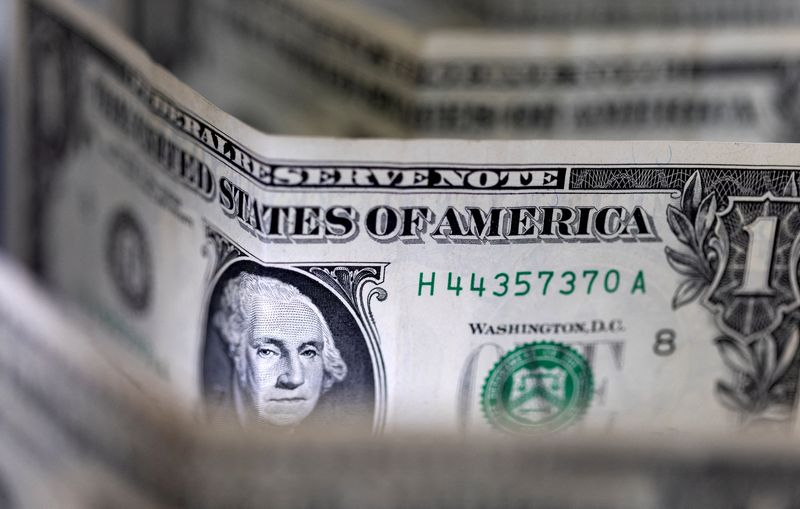Investing.com — As the U.S. Federal Reserve approaches a major turning point in its tightening cycle, the drag on yields may soon reach its peak.
Analysts at Barclays suggest that while further dollar weakness is possible, the worst of the depreciation is likely behind us.
The changing outlook for US monetary policy, coupled with global economic conditions, points to a more stable dollar in the coming months, even as the Fed’s rate-cutting cycle begins.
In recent months, market participants have increasingly priced in the likelihood of earlier and faster rate cuts by the Fed. These expectations are prompted by the perception of a slowing US economy and the accommodative measures taken by the Fed.
Real end rates, which reflect where the market expects the Fed’s tightening cycle to end, have fallen, from nearly 200 basis points earlier in the summer to below 50 basis points in recent weeks.
Despite this downward shift in interest rate expectations, Barclays analysts believe that most of the dollar’s depreciation has already taken place.
The , which tracks the dollar against a basket of major currencies, has been declining since mid-2023. However, the pace of further depreciation is expected to slow as the Fed’s monetary tightening cycle nears its end.
“That said, most of the dollar’s weakness tends to occur before the Fed’s easing cycles, and this move has already been large by historical standards,” the analysts said.
The dollar typically bottoms shortly after the initial cut, as the market begins to reassess the economic outlook. This pattern is playing out again, with the market already pricing in future cuts, causing the dollar to weaken accordingly.
But as the rate cut cycle progresses, the market often corrects its expectations for the depth of rate cuts. If the US economy avoids a serious recession, the Fed could cut rates more cautiously than expected, which could lead to a stabilization or even a recovery of the dollar.
During milder economic slowdowns, the dollar tends to recover once the market realizes the Fed is not cutting spending as aggressively as feared.
Barclays underlines that several factors are likely to limit the further depreciation of the dollar. One consideration is the possibility of a recession in the US.
Should the economy enter a recession, the dollar could strengthen as investors typically seek the safety of U.S. assets during times of global uncertainty.
In this risk-averse environment, the dollar’s safe-haven status could come into play again, especially against emerging market currencies.
In addition, geopolitical factors, including ongoing tensions in Europe and China, could provide support for the dollar.
Barclays points out that risks related to US-China trade ties and concerns about European political stability could prevent the dollar from weakening further.
The upcoming US presidential election also raises the possibility of shifts in trade policy, which could introduce new volatility into global markets and indirectly support the dollar.
The economic slowdown in China is another important factor. As Chinese growth continues to falter, driven by declining credit momentum and weakening consumption, the outlook for the Chinese remains bleak.
A weaker yuan could provide additional support to the dollar, especially against Asian and emerging market currencies. Barclays notes that as China’s credit impulse weakens, it tends to correlate with a stronger dollar.
Barclays predicts a further depreciation of the USD in the short term as the market continues to price in interest rate cuts by the Fed.
However, they expect the extent of further weakness to be modest as most of the dollar’s decline has already been behind us.
As the Fed’s rate-cutting cycle continues, the dollar may start to recover, especially if economic data points to a milder-than-expected downturn.
“Our new forecasts predict further USD depreciation in Q4 24, but recovery thereafter,” the analysts said.
This recovery could be driven by a recalibration of market expectations regarding the Fed’s rate cuts, in addition to improved global risk sentiment.
Barclays suggests that while periods of volatility are still possible, the dollar’s broad downtrend could be nearing an end.


